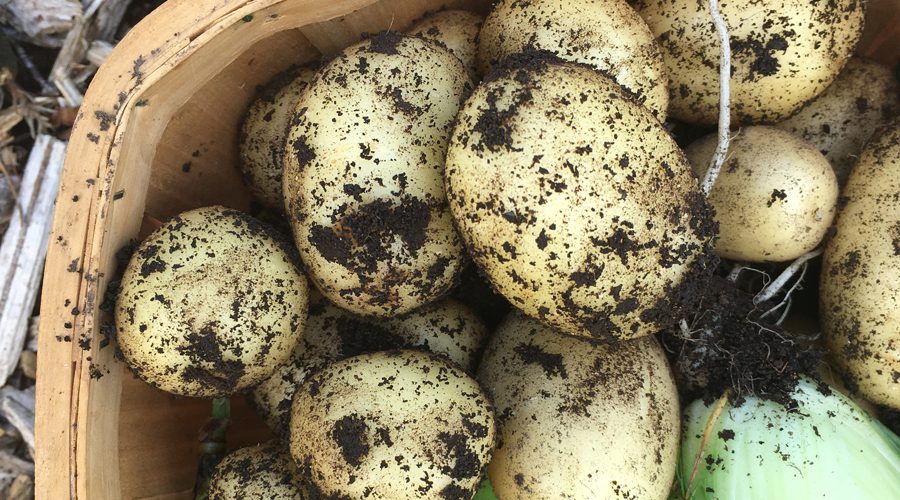Hidden under the ground, potatoes can sometimes be a bit of a suprise when you harvest them. Here are a few common types of crop damage:
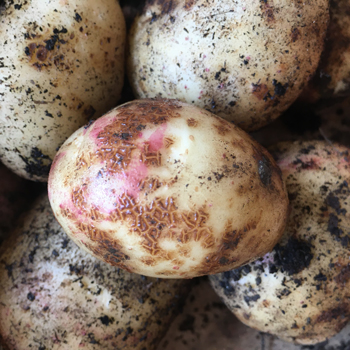
Scab
This bacteria-driven disease causes “scabby” rough patches on the skin of potato tubers and often occurs in hot, dry summers. It can be avoided by watering regularly and thoroughly. It’s not a major problem and you can scrape or peel the tubers before cooking to enjoy your crop anyway.
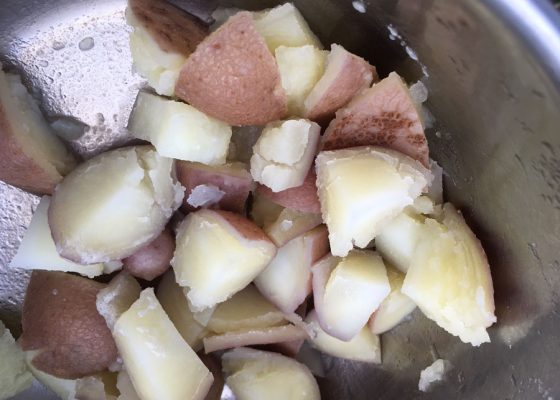
Disintegrate when cooked
If the tubers did not have adequate access to water while growing, they may have a tendency to absorb too much water on cooking, in which case they will easily disintegrate. Unfortunately there is not much you can do once harvested, but steaming or roasting the potatoes (without parboiling) is a good idea. Next year, try to water them more frequently!
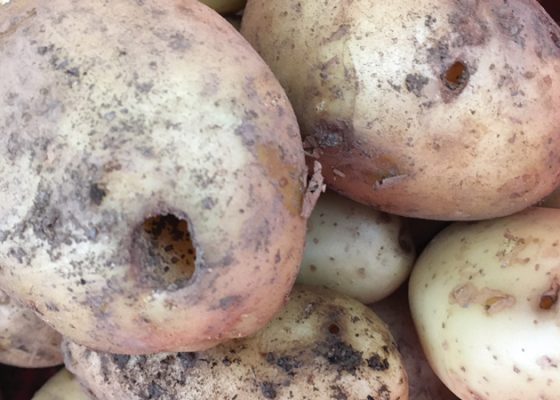
Slug Damage
Yep, sadly slugs will have a good old munch through your potatoes without you even realising they’ve done it until you dig them up! Try to keep on top of slugs by setting beer traps etc, and if you have a slug-infested garden then dig the potatoes up as soon as they are ready rather than leaving them in the ground.
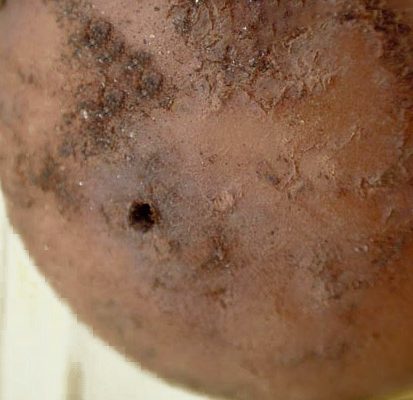
Cutworm & Wireworm
Easily confused with slug damage, the holes eaten by wireworm (the larvae of click beetles) is smaller – they create more pinpointed holes like those pictured here. You should be able to cut the damage off easily and enjoy your harvest.
Cutworm (a type of moth caterpillar), meanwhile, creates even larger holes to burrow into. This causes greater damage to the crop, but is less common.
Black Leg
If you see stems turning black at the base of your potato plants then it is likely to be black leg, a bacterial disease that strikes during damp weather. It is not as common as blight (thus why we don’t have a photo of it!) but the two diseases are easily confused. Look for leaf curling and lack of brown spots to distinguish it from blight. Lift the crop if you see signs of it, and destroy the foliage to prevent spread.
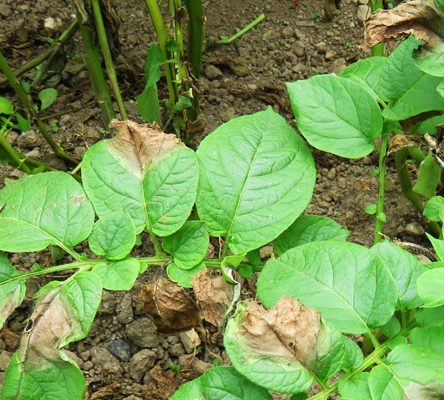
Blight
The first sign of blight is usually brown patches on the leaves. If it’s more advanced, you may see brown patches on the stems as well, and the leaves will have started to rot. Remove affected foliage and get rid of it (burning it is best). Then, try removing a few more of the leaves to allow air to circulate better between plants. Keep an eye on things and with any luck you may have got it under control before it got too bad!
If the crop is badly affected, then it is best to cut off ALL the foliage at the base of the stems. Again, try and burn it or get rid of it in another way. You can leave the potato tubers in the ground for two weeks to let the potato skins harden and then dig them up.

